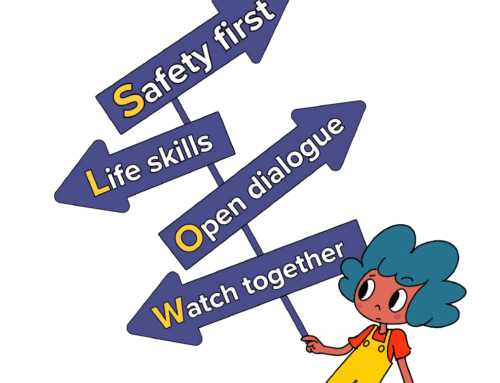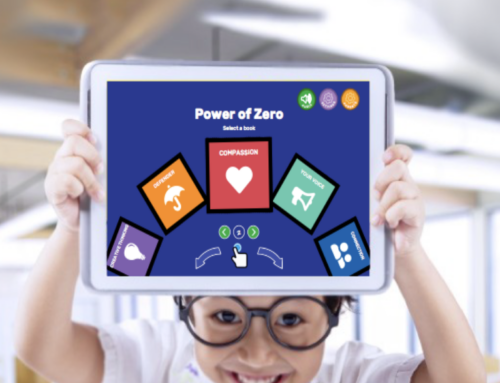Since the invention of online gaming, there have been concerns that video games were destroying the mental health of a generation. The WHO’s decision in 2018 to include Gaming Disorder in the International Classification of Diseases (ICD) has reignited fears that online games can be addictive.
In conversation with Nicholas Carlisle, Dr Daniel Kardefelt-Winther explains how the label of “internet addiction” label is unhelpful, and how best to support children in developing a healthy relationship to online games.
Nicholas Carlisle. You have thought so much about children’s wellbeing and how that relates to their online experiences. What inspired you to dedicate so much of your life to this issue?
Daniel Kardefelt-Winther. It’s personal. When I grew up in Sweden, I was part of the first generation of children to have access to the internet at home. And with that came a lot of fear. From my parents, from society, fear around what this would do to people, similar to what happened with television. I loved to play games, and I still play games. But society was not accepting of this. To me it was a space where I met people, spent time with my friends, and socialised.
When I got to university I studied psychology. In some of my classes I started reading the early papers on internet addiction, and I noticed the kind of questions they had asked of children in order to measure addiction. And I thought this is not so good, this is not what it is about. Of course there are problematic aspects of internet use, and some people use it excessively. But the way researchers were asking these questions was not right. I had some serious misgivings about the way people were studying the effects of technology on children. And it was becoming a big thing. I felt it should be possible to do this in a way that better represents children’s experiences, and that’s why I decided to do my PhD on it.
Nicholas Carlisle. You’ve presented some compelling critiques of attempts to pathologise internet use with terms such as internet addiction and gaming disorder. Could you crystallize your main objection to this?
Daniel Kardefelt-Winther. I think the Gaming Disorder diagnosis from the WHO is a better concept than “internet addiction”. I was more concerned with the label of addiction. My main criticism is that it draws largely unwarranted parallels to substance abuse behaviors. There’s only limited evidence to suggest that the consequences of a gaming disorder would be the same as the consequences of a substance abuse disorder, in terms of longer-term health outcomes. But when you use the same terminology for two different experiences, you’re giving the sense that they are comparable. If you look at the evidence around gaming disorder, it seems quite clear that it is a transient behavior that doesn’t always result in long-term harm. Substance use disorders on the other hand have severe, well documented, problematic outcomes and it seems to persist in the longer term as well. Substance use disorders kill people. I just think that there a bit of an unfair comparison being made.
My other issue with this comparison is that because people decided to use the same terms for these behaviors, they also use the same measurements to try to understand them. But drug use behaviour is very different from playing computer games, both in terms of immediate and long-term health effects. There are some similarities, but the motivations for engaging and the outcomes can be quite different, and we shouldn’t necessarily rely on the same measurements to understand both. There are lots of reasons for why young people engage in even excessive gaming so we need ways to understand why it is happening that aren’t only grounded in our understanding of substance use behaviours. Following the WHO’s involvement much has improved already in this field of research, but there is more work to be done.
Nicholas Carlisle. Although current research demonstrates that the impacts of online gaming are far from simple, the strongest, most fear-inspiring views continue to get widespread media coverage. From what you said earlier Daniel, it sounds as if you have a concern that these pathological terms are being used to colour very ordinary internet use by children.
Daniel Kardefelt-Winther. Yes, and I think we see that in some countries more clearly than others. There are some regions that are very worried about even limited internet use. If you look at internet use rates by the hour for example, some of the regions where internet use is actually quite low are the ones that are most concerned about addiction to the internet. I don’t think the number of hours people spend on the internet should be the measure of unhealthy behaviour necessarily, but if children are only able to spend one or two hours a day online, it is difficult to see how that could be considered pathological or a mental disorder.
Nicholas Carlisle. There’s been criticism of some Governments, for instance in China and Taiwan, for what they call internet addiction, to the point where they’re now levying fines on parents whose children excessively use the internet. Do you have any thoughts or any commentary around that?
Daniel Kardefelt-Winther. I haven’t heard about this before. My spontaneous thought is that while it’s a good thing that Governments try to address potential concerns relating to children’s engagement with the internet, I wonder how they measure this in practice? What is excessive for one person may not be excessive for another. What I think we should be concerned about is when someone uses technology too much for their own good. Some children might be able to do all their homework, go to school, have a good life outside the computer, and still spend 3 hours online per day. While other children might not be able to do that. Without knowing exactly how they are implementing this, I think it would be worthwhile to not only consider the number of hours a child spends online when trying to define what excessive is, but rather what they’re doing and how it affects them.
Nicholas Carlisle. So you’re saying that screen time in itself is not a clear enough indication of whether a child’s wellbeing is affected?
Daniel Kardefelt-Winther. Exactly. There is compelling research suggesting that the numerical amount of time is not the driving factor. It just doesn’t seem to be the most important thing compared to what you do online and why you do it. And the ‘why’ is important when we think about this idea of gaming disorder. My hypothesis is that you can get into unhealthy patterns of use because you’re using technology in order to cope with things that are difficult in your life. But if your life situation never changes, you get stuck in it. And that’s when it becomes unhelpful or potentially harmful. I think society would do a lot better in supporting children with these issues if we were able to understand what the reason is behind their extensive (not ‘excessive’) technology engagement. For many children, they are doing it simply because it’s fun and social, and even if it might seem a little excessive, it is not necessarily harmful in the longer term.
Nicholas Carlisle. At Power of Zero we focus on that element. We teach the healthy use of online technologies, and we’re developing lessons for young children on the premise that there is a way of using the internet that that can be helpful and healthy, and that can support creativity and learning.
Daniel Kardefelt-Winther. That’s important, and it’s interesting because if you look at existing international policy frameworks like those by European Commission, the Better Internet for Kids strategy for example, it very specifically sets out a policy pillar that supports the provision of high quality content online. That policy pillar is largely missing in a lot of other regions internationally. At the moment we’re looking at survey data from around 40 countries, trying to understand which digital experiences matter for different aspects of child wellbeing. The exciting part of this work is that we’re doing consultations with children in 18 countries around the world. We’ll be looking into getting the voices from children into this space, because listening to them is the only way in which we can understand what their worlds are like, and how digital experiences are influencing them.
Nicholas Carlisle. When we talk about wellbeing, parents and teachers often express concern at their children’s unhealthy relationship with the internet. They describe a compulsive quality of children being lost to their screens that shows up in three areas: internet gaming, social media use and pornography. My question is, is there a phenomenon here that merits a name, and if so how would you language it?
Daniel Kardefelt-Winther. I had a good conversation with colleagues last week about this. Someone brought up this idea of compulsion in gaming, and then they flipped that around and said, “What do you mean, that’s just flow states. Flow states are great for learning and for engagement”. So what was compulsive and problematic to one observant was a flow state and a good thing to someone else. When I hear parents say, “My child is completely lost, they’re obsessed”, my first thought is that they may also be having a really good time. Because they’re doing something they enjoy and it gives them something valuable, otherwise they wouldn’t do it. Isn’t that amazing? Can’t we use that somehow to figure out how to design digital experiences that benefit children?
Often we say that it’s hard for children to focus on long-term objectives, for example. But here we have a tool, on which children actually want to spend lots of time doing things that aren’t always immediately fun. When you “grind” stuff in World of Warcraft you’re killing the same monsters over and over again for days or weeks. And it’s not directly fun, but it’s rewarding in the longer term. So here you have children doing things that are not necessarily fun, but they do it anyway because they know it’s going to be good for them in the future and they want to reach a certain goal. It’s amazing that they exhibit that kind of long-term thinking and engagement, and it’s not uncommon to see this in online games. It’s an unfortunate framing of the situation when we immediately think about this as addictive and compulsive and somehow negative, and we don’t ask ourselves what children are actually doing here that makes them so interested. And of course in some cases they do it because they aren’t happy about other things, and are trying to escape from that, and then we need to help and support them. But in other cases, they’re just having a really good time, and not as many people try to engage with that.
Nicholas Carlisle. And what about the small percentage of children whose wellbeing is negatively affected? What about when it is affecting their relationships with their families? What terms best describe those situations without using pathological language?
Daniel Kardefelt-Winther. That’s difficult. I’m drawn to what you’re saying about causing problems in their families because we hear that a lot. And that’s also one of the ways in which you measure addiction: whether it causes problems with your important relationships. I would welcome better language around this. “Problematic use of the internet” is a term I’ve used in the past, but it doesn’t specify why it’s problematic or in what ways. As a starting point, it would be valuable to find different language for different activities. If you don’t look at what young people do online, it’s very hard to understand why they do it. And if you don’t understand why they do it, then it’s very hard to understand what kind of support they need. If a child is just playing games to escape from heavy school pressure, that might be reasonable for some time, and there are some studies suggesting that it actually helps children de-stress and feel better about their situation. But if they’re doing it more or less permanently, perhaps because they are socially anxious, or don’t have any friends in real life, or don’t see a meaning in what they are doing at school, our response needs to be different. We need language that describes a more nuanced picture and makes parents pause for a moment and ask why their child is doing this.
Nicholas Carlisle. Do you plan to investigate how parental attitudes about technology impact their children’s wellbeing?
Daniel Kardefelt-Winther. In our research we have asked about the way parents engage with their children around internet use. We haven’t done that analysis yet, so we haven’t looked at how parent involvement matters for their wellbeing outcomes. I anticipate that it would matter, depending on which wellbeing outcome you’re interested in in. What we have done is an analysis in four countries from four different regions of the world. We looked at the issue of screen time and if high screen time impacted children’s life satisfaction, and in line with much other research on this topic, it didn’t. What did matter was the relationship between parent and child. And a good family relationship was associated with greater child life satisfaction, which you would expect. For me, family relationships are at the core of what child wellbeing is about, and children benefit from positive, engaging, supportive family relationships. How that translates to parents’ engagement with digital technology, we don’t know as much about, but findings are emerging that positive and supportive engagement around digital technologies creates more favourable outcomes for children.
Nicholas Carlisle. One of the most disturbing films to address the phenomenon of children being lost to their screens was last year’s movie The Social Dilemma. It contains a fictional account of a perfectly normal American family whose kids are manipulated and ruined by their addiction to social media. What words of wisdom do you have for parents who are still shaking at the mention of this film?
Daniel Kardefelt-Winther. I haven’t seen the film, so you have to take what I say with a grain of salt. My sense from discussion with colleagues is that certain things which The Social Dilemma brings up are very important and very serious. The privacy issues, data privacy and personal privacy and the permanence of many things you do online, and how that might affect your life further down the line. These are extremely important questions. However, the way I understand it deals with ideas of addiction and dopamine kicks did not seem grounded in evidence or a rigorous understanding of neuroscience.
Nicholas Carlisle. Could you give us Daniel’s brief guide to why the dopamine argument is wrong?
Daniel Kardefelt-Winther. In a very simplified version, some people say when you use digital technology, dopamine is released in the brain because of particular features of that technology. And that provides us with a nice feeling, and people argue that we become dependent on that dopamine release and the nice feeling it provides us, which then causes addictive behaviour because we want more of it. This perspective misses the fact that dopamine is released when we do a lot of things. For example it’s involved in learning processes. You get dopamine released from many things that are interesting and rewarding. So why do we think this is a big deal when it comes to technology? We don’t talk about people being addicted to learning, even though dopamine is released here as well. The argument about dopamine being a causal driver for substance addiction has also been questioned by many researchers, who have found that substance intake that is not associated with significant amounts of dopamine release can also be addictive. My point is not to say that dopamine doesn’t matter in these processes, but that the proposed causal impact of it continues to be exaggerated.
Dr Daniel Kardefelt-Winther is the research lead for children and digital technologies at UNICEF’s Office of Research. Kardefelt-Winther began his career by exploring the concept of internet addiction. He has since written papers concerning topics ranging from screen time and child wellbeing to the gray area between behavioural addiction and substance addiction. Currently he works for UNICEF where he manages multi-country research on children’s use of digital technology, including the Global Kids Online and Disrupting Harm projects, establishing new methodologies to research how children across the globe really interact with the Internet.







Leave A Comment